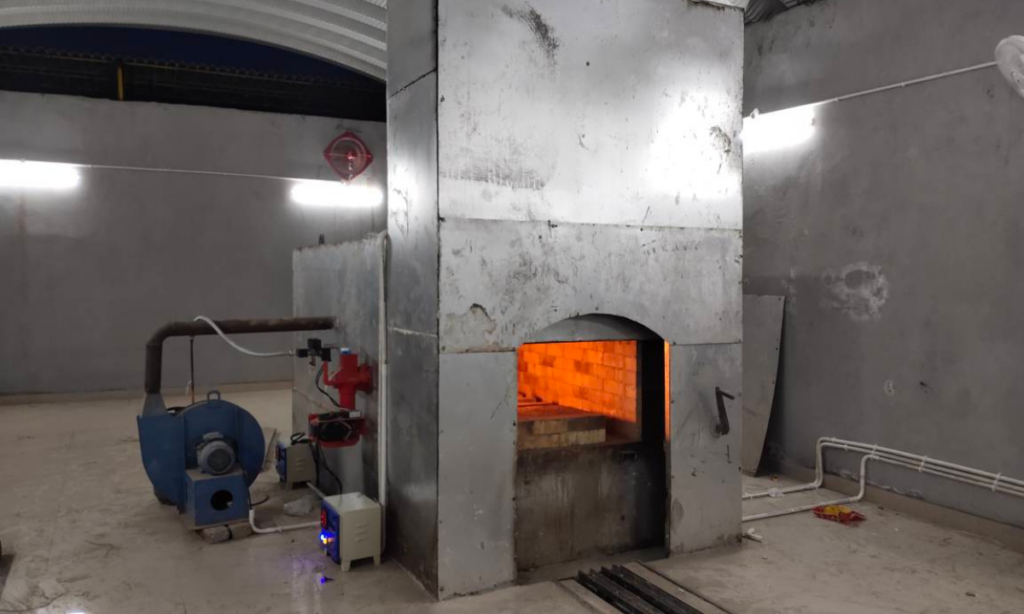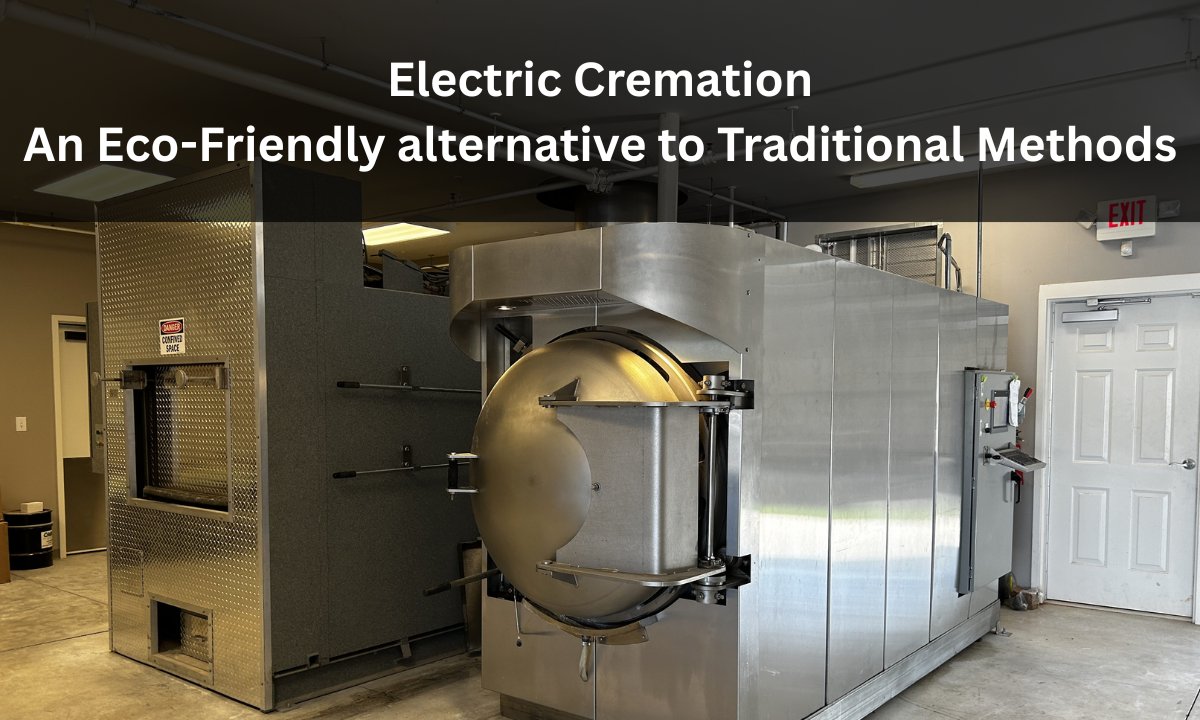Electric cremation, generally called dissolvable hydrolysis, is a state of the art cremation procedure that is ending up being logically notable as a decision to fire burning. While the final product is something similar – lessening the human body to incinerated remains – the interaction is very unique. We should investigate how electric cremation functions bit by bit.
The Banashankari Electrical Crematorium is located in Bengaluru, India. It utilizes electric incineration strategies that are more eco-accommodating than customary incineration services. The crematorium has present day offices and prepared staff that guarantee honorable incineration functions for local people.
The Harishchandra Ghat Electric Crematorium is a well known incineration ground in Varanasi, India. It was perhaps the earliest spot to present electric incineration and diminish ecological contamination. Numerous families decide to incinerate their friends and family at this memorable office because of its social importance.
The Arrangement
Like conventional fire cremation, electric cremation starts with setting up the body. The body is washed, wearing a cover or set in an incineration endorsed coffin or compartment. Any clinical gadgets like pacemakers are eliminated for security reasons.
When ready, the body is put into an extraordinarily planned tempered steel vessel called an incineration chamber or hydrolysis tank. The tank is stacked into the electric cremation machine.
How Electric Cremation Works?

Electric cremation uses water, alkali, and heat to break down the body. Here’s a more detailed look at the process:
- Chemicals – Alkali in the form of potassium hydroxide or sodium hydroxide is added to the water inside the tank. This creates a strong alkaline solution.
- Raising the Temperature – The water and chemicals are heated up to around 150–180°C (300–350°F). For reference, this is actually lower than flame cremation temperatures that can exceed 900°C (1650°F).
- Hydrolysis – At this high pH level and temperature, a chemical reaction called hydrolysis takes place. The extreme alkalinity helps to break down the body’s tissues and bones into a greenish-brown gray liquid suspension.
- Agitation – During this process, the vessel is gently agitated or rotated to help fully liquefy the remains. This can take somewhere in the range of 2-4 hours relying upon the machine used and the size of the body.
- Draining and Drying – Once fully hydrolyzed, the remaining liquid is drained out of the bottom of the vessel, leaving only dry bone fragments. Any dental gold, hip or knee replacements remain intact and are removable.
- Processing the Remains – These dry bone fragments are then washed with water and tested to ensure no liquids remain. The fragments are then dried fully and processed into clean white cremated remains similar to traditional cremation ashes.
As you can see, electric cremation replaces the high heat of flames with a carefully controlled chemical reaction using water and alkali instead. Now let’s look at some key aspects that make this process unique.
Key Differences from Flame Cremation
- Control – With fire incineration, outflows are delivered high up. In electric cremation, the whole cycle happens contained in the fixed hydrolysis vessel.
- Productivity – It takes more time yet utilizes less energy. Electric cremation is more energy productive than flares that require lots of fuel to arrive at massive temperatures.
- Ecological Effect – There are no outflows other than steam. Fire incineration produces carbon dioxide, mercury and different toxins from dental fillings. Electric techniques are more eco-accommodating.
- Size Impediments – Heavier, bigger bodies might require numerous stacking cycles as vessels can securely oblige up to 300 lbs. Customary blazes can deal with more.
With everything considered, electric cremation is achieving pervasiveness as a greener, contained, and effective burning decision – but a couple of particular limitations really exist.
Benefits of Electric Cremation
So in rundown, what are a few critical advantages of electric cremation contrasted with flares? The following are a couple of the top benefits:
- Less Contamination – As referenced, electric techniques produce zero airborne emanations and have a much more modest carbon impression than non-renewable energy source subordinate fire incineration.
- Control – The whole hydrolysis process happens securely contained inside the vessel with no open flares or burning required at any stage.
- Higher Accomplishment with Clinical Inserts – Dental fillings, hip or knee substitutions normally stay in one piece and can be taken out unblemished for return to friends and family whenever mentioned.
- Comparable Eventual outcomes – The end incinerated stays left after hydrolysis look practically indistinguishable from customary remains with a fine grainy surface. Strict customs and memorialization are not influenced.
- Green Other option – For some families hoping to respect left friends and family through a conclusive plan, electric strategies offer a reasonable and eco-cognizant decision.
While the forthright expenses of buying and working an electric cremation framework are higher presently, the innovation keeps progressing to turn out to be all the more generally accessible and available as an elective incineration choice.
Are there any specific regulations or laws regarding electric cremation?
Since electric or alkaline hydrolysis cremation is a fairly new concept, there are still some jurisdictions that do not have specific laws or regulations governing the practice. However, most places are beginning to establish oversight as the technology becomes more mainstream.
- FDA Approval – In the United States, the Food and Drug Administration approved the use of alkaline hydrolysis for human remains in late 2018. This opened the entryway for more boundless acknowledgment.
- State Laws- Some states like Minnesota, Oregon and Florida have passed laws legalizing and regulating electric cremation operations. Rules cover things like facility licensing, safety standards, record keeping.
- Local Permitting- Even where legal, facilities must obtain permits and approval from local health departments, zoning boards or other authorities before offering electric cremation services.
- Design and Maintenance Standards – Requirements usually specify equipment must be from approved manufacturers, properly maintained according to manufacturer guidelines and inspected periodically.
- Tracking and Identification – Facilities using electric cremation are responsible for proper handling and labeling of remains; tracking from start to finish like with traditional cremation.
- Training and Certification – Most places mandate only properly trained operators are allowed to perform cremations using licensed equipment.
Extra certificate might be required. While guidelines are as yet creating, capable oversight of electric cremation guarantees norms for general wellbeing, natural insurance, and conscious treatment of human remaining parts are kept up with as the training keeps on advancing. Families can feel assured it is conducted safely and according to applicable laws.
Believ Cremation Services is one of India’s driving providers of electric cremation services. With crematoriums located in major cities across the country like Bengaluru, we offer state-of-the-art alkaline hydrolysis facilities. Our trained professionals ensure each ceremony is conducted with utmost care, dignity and compliance with all regulations.





